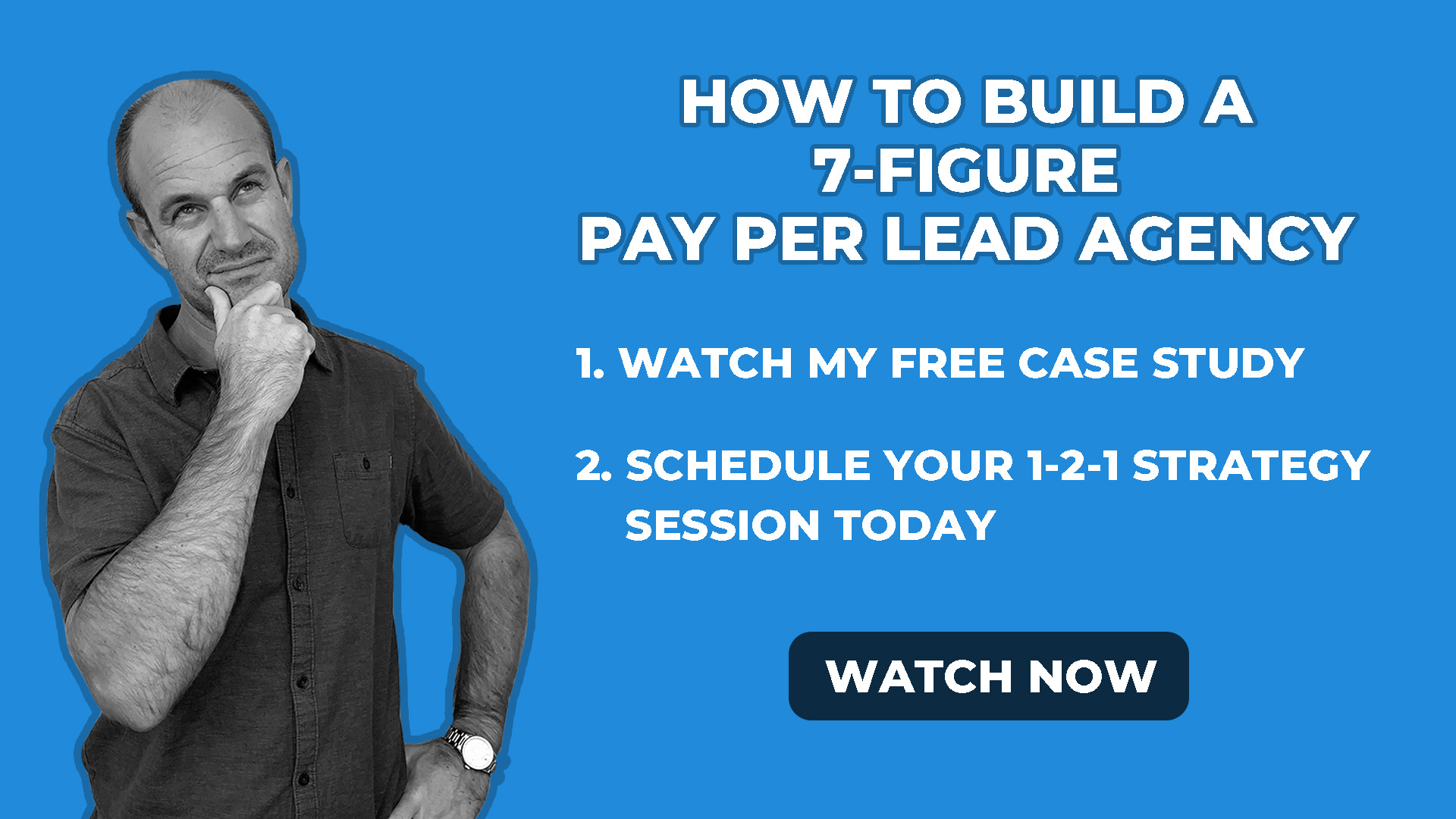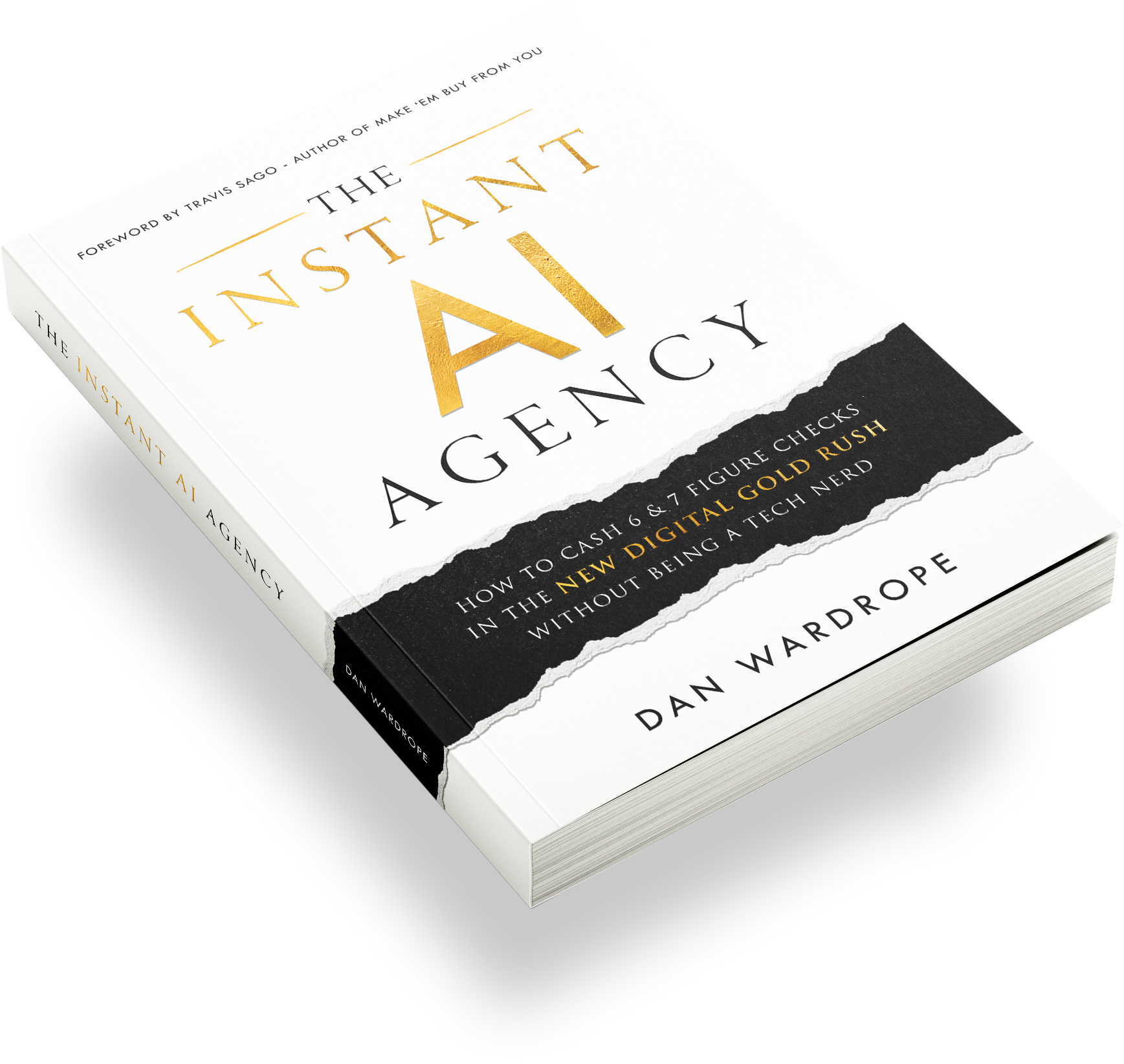You’ve got your Pay Per Lead model working for you like a well-oiled machine. But if your client isn’t used to working large volumes of leads properly, you may have to deal with some complaints about lead quality. Here’s how to handle them while keeping both you and the client happy as clams at high tide.
Lead Quality Complaints: The Problem
Uh oh.
Your brand new client’s on the phone, and they’re not happy.
You’ve spent hours creating the best sales funnel. Your ads are on fire, you’ve got advertorials, you’ve got quizzes. Your landing page made you cry genuine tears of happiness.
But the client’s telling you that the leads aren’t up to standard. The contact rate is too low, or too many people aren’t converting into customers.
You spend the entire call slowly chewing through the wood of your desk and wondering what the hell went wrong.
Sound familiar?
What if I told you that a majority of lead quality complaints aren’t your fault?
Let’s circle back to the beginning:
The Pay Per Lead model
The Pay Per Lead (PPL) model works on the idea that clients want high-quality leads and nothing else.
That’s right. No SEO, no fan page design. No complicated monthly reports, and NO long-running six-month contracts.
The PPL model is as simple as it’s elegant. I generate leads in a specific vertical for X amount per lead, then I’d sell the lead on to the client for X + Y (Y being my profit).
And, as I’m using my own money for the ad spend, for the client it’s risk-free. They only need to pay for the leads I provide, with no extra costs.
Here’s a quick bit of maths:
Say I was generating car finance leads for $25, then selling them to my client, upfront, for $50 at 100 a week.
My ad spend would be $25 x 100, which comes to $2500. My client would pay me £5000 ($50 x 100), giving me a total weekly profit of $2500.
As I’m paying for the ad spend, this model comes at a higher risk for me than a retainer contract. However, the higher risk balances with a much higher reward in terms of profit per lead.
Client Expectations and the Pay Per Lead Model
The client will be super-motivated to work these leads properly, as they’ve paid for 100+ leads upfront. However, clients used to purchasing leads via retainer contracts may not have the systems in place to handle PPL leads properly.
See, the PPL model is so new, some clients expect far too much and don’t prepare the sales team enough. Buying into retainer contracts meant their lead supplier would be tied to them for three to six months for a fixed fee.
Let’s say the client was paying their lead supplier $1000 a month for 10 hours work a week. A client, who’s also paying for the ad spend, isn’t going to want to pay the lead supplier a penny more for their services. After all, they’re already paying the lead agency 5-figures upfront.
As the client’s agreed to a fixed fee, they can ask their lead supplier to provide the following services, claiming that it’s “part of the contract”:
- AdWords skills
- Facebook PPC expertise
- CRO skills
- Google Analytics and Google Suite knowledge
- E-commerce skills
- Autoresponder expertise, like ActiveCampaign and Confusionsoft
- SEO skills
But you, on the PPL model, are supplying leads and nothing else. As a result, you may find that the client’s business lacks these skills and they’re relying on outside parties.
Because these clients are used to having other people “tidy up after them”, you may find they expect the impossible for their money. I’m talking a 100% contact rate, or high conversion rate expectations that just aren’t viable.
Still, there isn’t time to be pointing fingers. Instead of getting defensive when clients contact you with lead quality complaints, keep a level head and try to work through the problem.
This means asking plenty of questions, managing expectations and, most importantly, coming up with solutions that will keep both of you happy.
Here’s how you can do just that.
Check Your Client’s Expectations For Contact Rate
Clients paying a lot of money for leads may have some unreasonable expectations about their contact rate. They may expect 80% or even 100% if they’re paying enough. If the contact rate doesn’t meet their expectations, you can be sure they’ll complain about the lead quality.
And if your client isn’t happy, you won’t be happy either.
Unfortunately, you can’t advertise your services as “generating premium quality leads” unless the average contact rate is at 50% or more. Ideally, the contact rate of your leads will be at 70%.
That said, out of every 100 leads, at least 10% of them just won’t pick up the phone, even if they went through the entire funnel. Cold feet, a hectic schedule, they’ve changed their minds… no one knows why. But make it very clear to your client that a 100% contact rate is impossible.
There are also steps you can take to ensure the contact rate of your leads remains high. If you’ve had multiple complaints about the contact rate of your leads, take another look at your sales funnel.
Check Your Funnels For Lead Quality
Are the users taken straight from an ad to a landing page? Add an extra qualifying step, such as a marketing quiz or an advertorial.
Already got that middle step? Check the traffic on your advertorial/quiz in comparison to your landing page. Is a large volume of visitors dropping off at that crucial step? It could be time to take a look at your creative. Consider running some AB split tests and see if that helps the situation.
Likewise, check the traffic on your landing page vs your thank you page. The same applies – are you losing lots of people on your landing page? Then that’s a problem. Especially as they’ve gone through the ad and advertorial stage already.
Then check your thank you page. You may think that if a visitor’s landed on your thank you page, you’ve definitely got them in the bag – but you’d be wrong. A thank you page is just as influential as any other stage in the funnel for defining lead quality.
Check For And Prevent Fake Leads
Sadly, a percentage of your leads are probably going to contain fake numbers or addresses. Spam leads are probably the primary reason for lead quality complaints.
Frustrating as that is, there are measures you can take to stop this happening as often.
Lead validation tools, such as Loqate, use a vast database of numbers and addresses to check for spam form submissions. For example, if a telephone number or address doesn’t match one within the system, in a specified country, Loqate won’t allow the prospect to proceed with the form.
Lead validation tools like this don’t come cheap, but you can use them in synergy with website builders like Unbounce. Plus, the overall quality of your leads are improved so drastically, it’s worth it if you have high-ticket clients with the resources to chase lots of prospects.
Using lead validation tools from the word go is a great way to stop lead quality complaints before they even start.
Check The Client’s Response Rate
If you’ve done all of the above and you’re still receiving lead quality complaints, it may be time to check your client’s response rate.
See, if you’ve got a watertight funnel and the client complains about a 40% (or under!) lead contact rate, it may be something to do with their sales team.
This is no disrespect to your client’s team or their sales skills.
However, if the client orders 100 leads a week, spread out over five days, that’s 20 leads a day. If the client doesn’t have a team large enough to keep up with the volume, that’s going to prove a problem.
Much like the packet of biscuits in your cupboard, leads have a shelf life. If a prospect expected contact within a set amount of time, then doesn’t receive that call within that timeframe, they’ll write the company off as unprofessional and look elsewhere.
In fact, statistics say that leads not dealt with in the expected timeframe are 10x more difficult to close.
If it’s only Johnny and Susan in the office, dealing with 20 leads a day, then they haven’t got a chance.
And neither have you.
But do make sure you check your funnels and lead validation, in the face of any lead quality complaints, before you start asking about the client’s sales team. It may prevent any client relationships from going sour.
Check Your Client’s Follow Up System
If you’re delivering your leads into your customer’s CRM system and they’re sitting untouched for hours (or days), that could prove a serious problem.
As I mentioned previously, leads that have gone cold are 10x harder to close.
So, if you’re delivering leads into the client’s CRM system, and that’s not triggering some sort of sequence, that could be a prime reason for any lead quality complaints.
Once a prospect has hit the “submit” button, they naturally expect some kind of confirmation – preferably personalised. This can be in the form of a text message or an email, and it should contain the following information:
- When to expect contact from the company (today, tomorrow, within 15 minutes)
- What number or email address they’ll receive the call/email from
- Who the prospect will be speaking to (if possible)
- What gets covered in the email/call, and the resources the prospect will need (payslips, bank details, etc., depending on the service offered)
- What to do if they don’t receive the call/email as expected
The more details your clients provide, the safer the lead will feel for making that commitment. Just sending a confirmation email or a text can be the difference between an “uncloseable” lead and a paying customer.
If your client is unaware of SMS or email follow-up sequences, you should introduce it to them. It’s a bit of extra work but, as you’ll be providing value, they’ll be much more likely to hire your lead generation services again.
You’ll face fewer quality complaints and you could charge extra for the higher-quality leads as a result!
Check Your Client’s Target Market
Sometimes a client will complain that you’re sending them the “wrong type of leads”, but they won’t be able to explain why.
To generate top-quality leads for your client, you’ll need to know the demographics they’re targeting.
Before you start generating any leads, ask your client the following:
- What age range are you targeting?
- What’s their gender? If both, how are conversions weighted? I.e. 70% female and 30% male
- Where does your ideal customer live?
- Are they married?
- What is your ideal customer’s average monthly income?
- What is their occupation?
- Do they have a college or university degree?
If your client gives you wishy-washy answers, that’s a huge red flag. Your client knows their own business better than anyone, and the answers to these questions should roll off the tongue.
Essentially, if your client doesn’t know their own target market, you haven’t got a cat in hell’s chance of generating leads that’ll satisfy them.
Combat Lead Quality Complaints By Finding A Solution
If a client complains about the quality of the leads, it’s up to you to help find a solution. True, the contact and conversion rate of leads may not be your fault, but the client’s paying you for a quality product.
Get on the phone and start asking your client some questions. Is it contact rate that’s the problem? Is it too many fake leads? Are the leads outside the client’s target market?
The trick is to remain level-headed and not get defensive. Instead of seeing complaints as a criticism of your services and agency, view these problems as a chance for both you and your client to grow.
If there’s something your client’s not doing, like sending out autoresponders, don’t be afraid to make suggestions. By doing so, you’ll be actively adding value to your client’s business. As you continue to add value, your relationship will grow stronger. They may even become a client for life!
Want to avoid lead quality complaints in the future? Before you take on any new Pay Per Lead client, there are a few questions you should ask them to see if they’re a good fit. You can read about them in this article, here.
Free Training
Flexx Digital is a PPC agency that uses the Pay Per Lead model – no retainer contracts.
If you want to find out more about this PPL model, and how we run the business, check out my free case study.
Inside you’ll find how I:
- Severed ties with retainer contracts once and for all
- Moved away from local businesses
- Started working with national B2C companies
- Land high-ticket clients
- Found the verticals we work in
- Consistently generate leads of the highest quality
Click below to watch it now:








